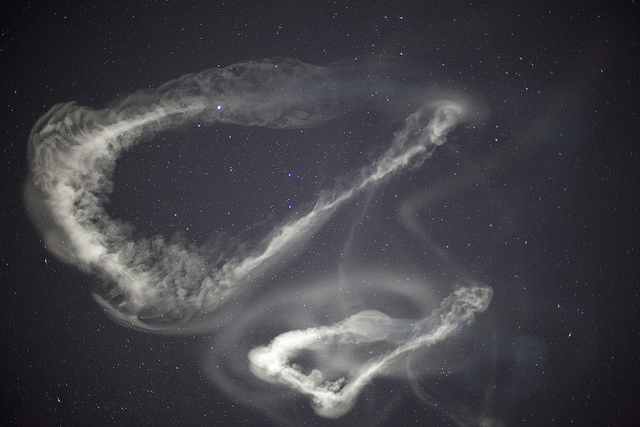I saw reports of strange clouds pop up yesterday, but not until I saw this article from National Geographic did it make sense.
Observers on the north east coast of the United States saw some strange and beautiful clouds in the early morning hours. The clouds were from a series of 5 rockets NASA launched called ATREX to study the complex flow or air in the upper atmosphere.
ATREX Images
Check out these amazing images of the clouds of tracer that the ATREX Rockets flared into th atmosphere. The coolest one I’ve seen is the first one by Steve Maciejewski on Flickr. View more of Maciejewski’s images on Flickr and Zenfolio

Each rocket released a chemical tracer that created milky, white clouds at the edge of space. Tracking the way the clouds move can help scientists understand the movement of the winds some 65 miles up in the sky, which in turn will help create better models of the electromagnetic regions of space that can damage man-made satellites and disrupt communications systems.
The launches and clouds were reported to be seen from as far south as Wilmington, N.C.; west to Charlestown, W. Va.; and north to Buffalo, N.Y.
The Anomalous Transport Rocket Experiment (ATREX) is a Heliophysics sounding rocket mission that will gather information needed to better understand the process responsible for the high-altitude jet stream located 60 to 65 miles above the surface of the Earth. [NASA]
Heliophysics: “The study of the system composed of the Sun‘s heliosphere and the objects that interact with it—most notably, but not limited to, planetary atmospheres and magnetospheres, the solar corona, and the interstellar medium.” [Wikipedia]
We live in the extended atmosphere of an active star. While sunlight enables and sustains life, the Sun’s variability produces streams of high energy particles and radiation that can harm life or alter its evolution. [NASA Science Mission Directorate’s Heliophysics Research Program]
ATREX Video
This video from NASA has a great explanation of the project.
The Atmosphere
The Earth’s atmosphere is the bubble of air between the surface and space. It isn’t a hard boundary though. Rather the air gets thinner and thinner until you’re in space. The info graphic below illustrates the layers of the atmosphere.











Add comment